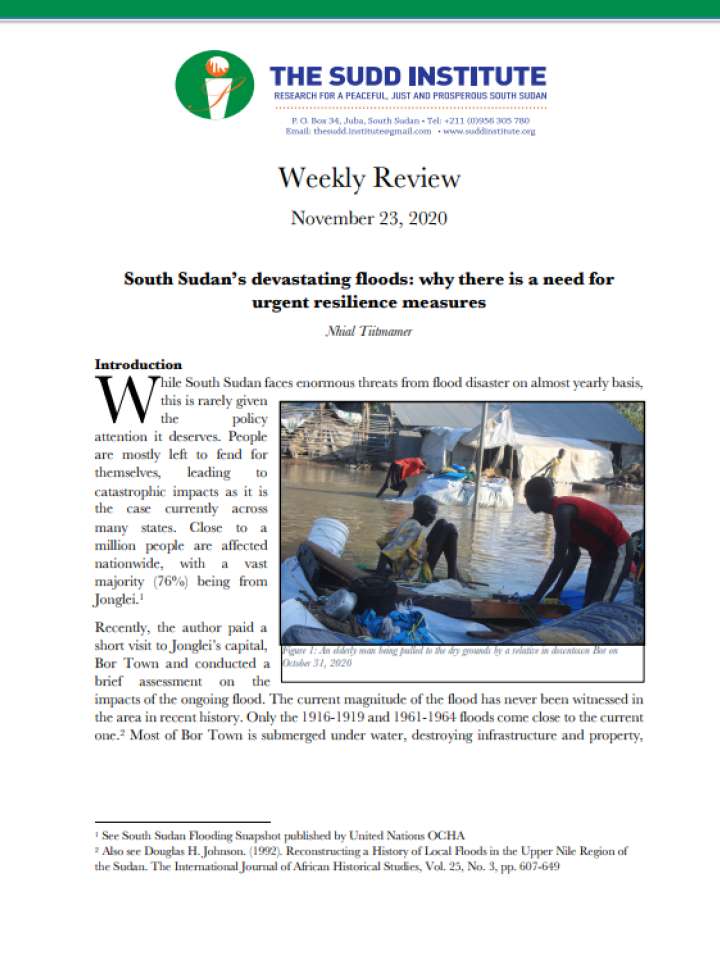South Sudan’s devastating floods: why there is a need for urgent resilience measures
This review explores the magnitude of this year’s flood and its impacts in Bor Town. The author and his team used a boat to get us around the town surveying the extent of flood water and measuring its depth in the streets and in the residential neighborhoods. They also used the GPS to capture the geographical coordinates submerged under water, showing exactly the depth of flood in the town by locations.
The review includes some recommendations, saying that the government should as a matter of urgency come up with immediate, medium and long-term policy interventions to build the country’s climate resilience capacity to withstand flood disasters that threaten its economic, social and environmental stability.
Immediate response measures for the government and partners, including humanitarian organizations and international development agencies:
- Relocate people to high grounds, provide them with basic necessities and temporary land and ensure they live in peace with host communities by seeking their consent, conducting regular dialogues and implementing projects of mutual benefits.
- Repair existing dykes in Bor Town and other flood affected areas to ensure flood protection in the next flood season. This should be carried out this coming dry season starting in December 2020 in order to build flood mitigation in the next rainy season. It needs communities, local, national and international organizations to work closely with local, state and national governments in terms of mobilizing resources and expertise, and implementing the plan for the dyke repair and extension.
- Conduct a feasibility assessment of suitability of eastern parts of Bor, Twic East and Duk counties for possible relocation of the current flood prone settlement areas. Such assessment should include identification of high grounds, evaluation of land use for various purposes including possible wildlife corridors, farming and grazing areas. It should also include security assessment including evaluating a feasibility of fencing as part of strengthening security as well as protecting other important land resources.
Medium to long term measures in the next 6 months to 5 years:
- Establish a climate early warning system to prepare the people before a flood strikes. To be effective, such an early warning system needs improvement of hydrometeorological stations along the Bahr el-Jebel section of the White Nile starting with improvement of infrastructure and regular gauging of water levels and discharge measurement stations in Nimule, Juba, and Mongalla as well as communication channels through which early warning messages can be disseminated for warning and decision making.
- Negotiate and enter in a bilateral agreement on improvement of water information sharing with upstream countries of the Nile River such as Uganda and setting limit on release of excessive water from Ugandan dams.
- Enact climate change policy and legislation; and establish a climate change agency equipped with technical, financial and political support to design and implement adaptation and mitigation measures against floods and other climate induced disasters.
- Conduct comprehensive feasibility, environmental and social impact assessment studies on the following flood management and resilience options: see page 11 of the report.
Explore further
